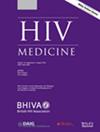Lipid nanoparticles in antiretroviral therapy: A nanotechnology breakthrough for HIV/AIDS treatment
Abstract
Background
The development of an effective drug delivery system for the treatment of HIV/AIDS is a global challenge. The conventional drug delivery approach, namely highly active antiretroviral therapy (HAART), has increased the lifespan of HIV/AIDS patients. While antiretroviral drugs are critical for managing HIV/AIDS, they are not considered curative treatments and require additional supportive treatments depending on the clinical condition. Theoretically, all steps in the life cycle of HIV are potential targets for antiretroviral therapy. However, the eradication of HIV is still not possible with these approaches on account of some limitations. Lipid nanoparticles are effective in the delivery of antiretrovirals (ARVs) as they primarily lower the toxicity of ARVs and ease of scaling up and manufacturing, and also offer functionalization capabilities, targeted drug delivery, controlled release profiles and increased load capacity.
Methods
Data were retrieved from various online electronic resources, including PubMed, Google Scholar and Scopus among others. Keywords such as ‘lipid nanoparticles’, ‘antiretroviral therapy’, ‘HIV/AIDS’ and ‘nanomedicine’ were used to formulate search strategies across approximately 106 research and review articles.
Results
Lipid-based nanoparticles, including liposomes, solid lipid nanoparticles, nanostructured lipid carriers and hybrid lipid nanoparticles, have been reported as being an effective strategy for the delivery of anti-HIV drugs.
Conclusions
This review discusses how lipidic nanoparticles can be used to deliver drugs to their target sites in an effective manner and considers the fate of lipid nanoparticles within the animal body.

 求助内容:
求助内容: 应助结果提醒方式:
应助结果提醒方式:


